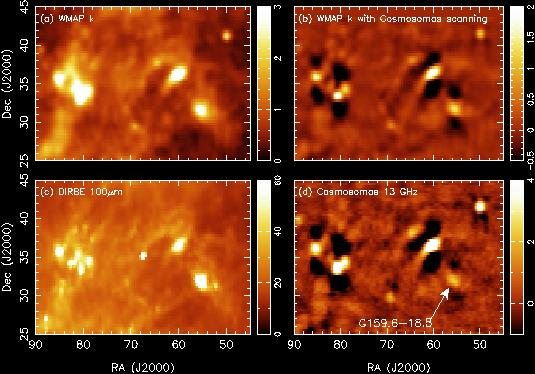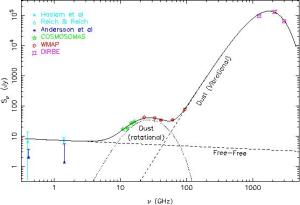COSMOSOMAS Results. Detection of anomalous microwave emission
In Watson et al. (2005), we present direct evidence for anomalous microwave emission in the Perseus molecular cloud, which shows a clear rising spectrum from 11 to 17 GHz in the data of the COSMOSOMAS experiment. By extending the frequency coverage using WMAP maps convolved with the COSMOSOMAS scanning pattern we reveal a peak flux density of 42±4 Jy at 22 GHz integrated over an extended area of 1.65° × 1.0° centered on right ascension 55.4° ± 0.1° and declination 31.8° ± 0.1 ° (J2000). The flux density that we measure at this frequency is nearly an order of magnitude higher than can be explained in terms of normal galactic emission processes (synchrotron, free-free and thermal dust).
An extended IRAS dust feature G159.6-18.5 is found near this position and no bright unresolved source which could be an ultracompact HII region or gigahertz peaked source could be found. An adequate fit for the spectral density distribution can be achieved from 10 to 50 GHz by including a very significant contribution from electric dipole emission from small spinning dust grains.

